When planning and designing an ebike build one of the first questions that a builder needs to ask themselves is how much power do they really need? A perfect build would have enough power to get up the biggest hill in your commute at the speed you want to go uphill at and would also have the top speed that you want to ride at available when you want it on the flats.
Building a bike with more power than you need means you have to spend more and carry around has extra weight. Building an under-powered ebike just plain sucks, so don’t do it.
The biggest decision you will have to make first is whether to go with a Direct Drive, Geared Hub or Mid Drive system.
- Direct Drive works well with <5% grades at lower power and requires a lot more power than the other two to climb steeper grades. Forget about climbing grades steeper than 20% with a DD motor, at that point you are dumping so many watts into it that you just can’t deal with the heat issues anymore. Some heavier DD motors can take a lot of watts for shorter periods 5000W+ and shed their heat quite quickly. There is no geared hub on the market currently that I know of that can take those kinds of power levels.
- Geared hubs are geared down usually 5 to 1 so they work much better on hills than the DD motors. They can climb sustained grades that are 10% and steeper but then start running into serious heat issues with steeper grades. Since the motor is ‘inside’ the geared hub casing it can’t cool as fast and will quickly overheat on long hills. It’s hard to dump more than a couple thousand watts into these motors for any real length of time without serious heat issues.
- A mid drive system is unbeatable on hills. All electric motors work best inside a certain RPM range and the ability to change gears means your motor can work at the speed where it sheds heat the best and produces the most power for the least amount of watts. If you are regularly needing to climb long hills that are 10% or steeper grade then mid drive is the way to go. Most Mid drive units are geared down around 18 to 30 times (to create a comfortable pedal cadence) and then are geared back up through the drive train of the bike for more speed.
For DD and Geared hubs the wheel size is critical. If you want more torque and more hill climbing ability then smaller wheels are better. If you want higher top speed then using a bigger wheel will usually increase the top speed unless you are at the power limit of the motor already. For mid-drives you can tweak the front chain-ring size to get the perfect gearing ratio. The perfect mid drive build means that on most hills you are climbing on the 2nd granny gear up which still leaves the biggest granny gear for the really steep hills. When you are in your highest gear you should be able to hit the highest top speed you want on the downhill while still having a comfortable pedaling cadence.
Nominal vs Peak
When you see a motor advertised the power rating that you see is generally it’s nominal power rating. This is pretty much the power level you can feed the motor all day long without having serious heat issues. What is NOT as easy to find out is the peak power rating of a motor. The peak power rating is what you can put into the motor for short periods of time, however if you run it at peak power for extended periods something almost certainly fail. Usually it is melted phase wire insulation but it could also be the hall sensors or the clutch or the windings could melt. I’ve done it all.

The soon to be released BBSHD claims 1000W nominal and should be over 1500W peak.
Amps vs Volts
Watts = Volts x Amps
When you want a higher top-speed with an electric motor then your best bet is to add volts, if you want more torque and hill climbing ability than the best way is to add more amps. Your torque will increase a small amount when you add volts, and often your top speed will increase a little bit if you add more amps, but for the most part volts=faster and amps=power.
When you add volts to the system you add a lot of weight to your battery pack. A 100v pack weighs twice what a 50v pack made from the same individual cells would weigh with no increase in Amp Hours. Amp Hours are a measurement for how long you can run your battery for. A 25 Ah pack can produce 25 Amps at the rated voltage of the pack for exactly 1 hour before it dies. Note that the Ah rating is completely different from the number of amps your pack can provide on demand.
What Voltage do I use?
My advice on picking your voltage is to use the lowest number of volts you can get away with and still get the top speeds you want. If you want to add power then add Amps because from a weight and dollars standpoint it is generally ‘cheaper’ to add amps than it is to add volts. More amps generally means a slightly bigger controller, a better BMS and thicker wires and better connectors to take the load. I have fallen out of love with the Anderson Powerpole connectors which are only really applicable for ‘lower power’ applications and now really like the XT90 connectors. I suggest you buy the XT90 with pigtails and then solder to your existing wires, its much easier than trying to solder wires directly to the connectors.
Continuous Amps vs Burst
Any battery pack you buy will have a continuous Amps rating as well as a Burst or Peak Amps rating. The idea behind the continuous amp rating is that the battery should be able to provide that much power non stop without overheating or shutting down. Will your battery like providing the continuous amp rating for an hour straight? Probably not unless you have a very big pack with a very wimpy BMS. More often than not it’s the other way around with the smallest pack you can get with the beefiest BMS you can find pulling the most amps out of your cells they can take. Also be aware that it is totally normal for sketchy Chinese vendors to overstate the continuous Amps rating on their packs, actually they often overstate everything about their packs to increase their sales. Buyer beware.
Whatever power level you have going to your controller and motor you want the Cont Amps rating of your pack to be able to support it. I generally get it a few amps higher so I don’t have to worry about stressing the BMS out. Foe example: if I need 35Amps continuous I’ll get a 40Amp continuous BMS so I don’t have to worry.

High Turn Count vs Low Turn Count. Image from this article on Electricbike.com
Choosing a Winding
Different DD and Geared hubs are often available with different windings. A lower Turn count (6T or 8T) will provide higher top speeds (given enough power) and a lower turn count will (10T or 12T) will give you a lower top speed but also much more torque. If you are uncertain about what turn count to get your motor in you should just ask someone else smarter than you their opinion on a forum like endless-sphere.com .
How much power do I really need?
This question is not easily answered. It depends on 3 criteria
- What you want your top speed on level ground to be?
- What steepness of grade do you need to climb and at what speed?
- Do you want to go with DD, Geared Hub or Mid Drive?
In my opinion the sweet spot of ebikes is 30ish mph on the level, 40ish mph on a 10% downhill grade and 20ish mph going up a 10% grade. To get to those numbers it will take different power levels depending on what drive system you go with.
There is a good ebike motor simulator from Justin at Grin Tech which will give you a rough idea of what speeds you can get at different motors with different power levels in different conditions located here. When shopping for a motor and determining what power level to drive it at a tool like this can be invaluable in figuring out what your motor will really provide. Be aware than many people on the forums claim their real-world applications of these motors provide slightly lower speeds than what is shown in the simulator.
With a DD system you will need a lot of power to be able to climb a 10% grade at 20mph. 2000 Watts or more should do it on most large DD motors, but be aware that a DD motor spinning that slowly under that much load is going to quickly develop more heat than what you’re going to be able to shed unless it is filled with fluid or has air vents stamped out all over it. A large DD system works quite well as a commuter and can be extremely efficient at higher speeds, but where it really flounders is on hills where it can take a tremendous amount of power to get up not so steep hills.
A geared hub system like the Mac should be able to do all 3 of those numbers if you have a big enough controller and battery pack. Something that puts out 1500W continuous should do it if it has the right turn count and right sized tire on it. It will be much harder to meet those speed specs with a 29″ tire than it will with a 26″ or smaller tire. Also be aware that your standard 26″ fat bike tire really has a diameter that is closer to a 29″ tire due to the extra tire thickness. On extended hills the geared hub motor will quickly build up more heat than it can shed and unless you cut the power back using less throttle it will probably fail.
If you want efficiency and the power levels listed above are scaring you off there is hope yet because if you want to stay within the US street legal 750W Nominal rating the BBS02 can basically do close to 30mph on the level, 40mph on the downhill and 20mph on a 10% grade if you throw a big chainring on it. My commuter is a 26″ mountain bike with a 52T Bafang front ring on it and if you use the throttle which peaks out at around 1300W and are in the right gear all those numbers are totally doable. If you want to drive the BBS02 close to it’s peak rating on a regular basis then you will need to install a thermal probe or risk destroying the drive unit.
Can my controller take the load?
Once you figure out the power level to dump to your ride you need to make sure your controller can take the power you want to run through it. It makes sense to buy a slightly larger controller than what you think you need as generally the price differences are small but a larger controller can give you flexibility in the future to add a more powerful battery and keep cranking up the power till your motor melts.
I’ve had good luck with Lyen controllers which are one of the most expensive options out there. It can get a little confusing because many controllers work with a wide range of voltages but are limited by the number of amps you can safely run through them. It’s best to tell Edward Lyen exactly what you’re trying to build, your battery size and power level and let him recommend and program a controller for you to buy. If you want to upgrade the battery in the future make sure you make it clear that you want to do that and what size you might be upgrading to in the future so he can make sure that the mosfets will be able to deal with a higher voltage pack. Changing the amps on a controller is a pain and requires a programming cable so I don’t recommend it.
Here is a very rough guideline of power levels and controllers I would consider. Many of the Lyen controllers can take a much higher load than what is listed below, but most generic cheap chinese controllers would not be able to provide the power levels that I have listed below without popping mosfets or burning out.
- 750W or less you can use a decent quality 6 Fet controller
- 750W-1200W use a 9 Fet controller
- 1200W-2500W use a 12 Fet controller
- 2500W-5000W use a 18 Fet controller
- 5000W+ use a 24 Fet controller and hold on
Should I stick with what’s legal?
A legal ebike as defined by Liveforphysics is a bike that
“It’s an ebike if you can ride past a cop and not get stopped.”
The 750W rating you hear all the time in the US is what people who sell the motors need to sell it as to be qualified as an ‘ebike’ and not an electric motorcycle or scooter. It has nothing to do with what is legal for you to ride on the street which can vary wildly from state to state. Your best bet is to know what’s legal then build whatever you want. Don’t do the crime if you don’t want to do the time. If you run over a toddler on your 50mph uninsured, unregistered ebike expect it to not end well for you. I tend to build the smallest power level ebike I can that will achieve the performance goals I want to meet.
If you are stuck in the Europe or Australia or someplace with a wimpy 250W limit on ebikes and you want to stay legal (I wouldn’t) then I strongly recommend going with a mid-drive system. At those low power levels a geared hub and DD motor are all but useless on most hills and at least with a mid drive you can gear way down and crawl up hills at a granny pace.
Wind Drag
Once you get over 30mph your efficiency of your bike starts to drop off dramatically. It also starts taking a lot more power to go faster. If you want to build an ebike that goes 40 mph or faster on the level then you will need to take this into account. For bikes that go that really fast mid drives can have problems from the extra strain on the drivetrain. Most builders opt for large DD motors that can take a lot of watts and shed heat quickly for those power levels and over 40mph top speeds.
Motorcycle\Moped Rims
For heavier DD motors like the MXUS a lot of people opt for smaller motorcycle or moped rims. These are a lot more durable that bicycle rims and can more easily and safely carry the load of the 20+ lb DD motors. The nipple holes are larger allowing you to use bigger spokes and the wheel diameter is smaller giving you more torque.
A popular option for geared hubs is the Mac motor which is rated for 500\1000W but can take 1500W for sustained periods without having too many problems. If it is trying to climb an extended hill under high power you will have heat problems but at only 9.5 lbs for the FatMac $280 will get you a lot of bang for your buck. Some people run 3000W peak through these motors, but you can only do that for short periods of time and not on hills.
What do I recommend for mid drives?
For mid drive units there is a lot of options, but the most popular one by far for DIYourselfers is the BBS02. This motor can mount on most 68/73mm bottom brackets. There are 3 companies that have produced axle kits that convert the BBS02 to 100mm so that it will work properly with fat-bike bottom brackets. If you can wait the newest drivetrain from Bafang promises the BBSHD avail stateside in November 2015. It will have 1000W Nominal and probably over 1500W peak with two different sizes of axle that ships from the factory to work with normal 68-73mm BB bikes or with 100mm+/- BB fatbikes. From the factory the BBSHD will take 48v and run a new 12 FET controller with higher end IRFB3077 mosfets at 30Amps. There is speculation that you could be able to set the power on the controller to as high as 45 Amps, but that has yet to be confirmed. I think it makes sense to wait for this motor to come out as from a price\performance standpoint. I can think of nothing else on the market that comes close except the Lightning Rods Big Block kit (mine should be here any day now).

I opted for a primary reduction chain instead of belt to make sure it could take the 3000W Cont load.
Conclusion
If you want to build a high power commuting scooter and dump over 3000W continuous into your motor then a DD motor on a smaller motorcycle rim is probably your best bet. For anything you want to use riding single-track at pretty much any power level I still believe mid drives are the only way to go. The 750W BBS02 the best currently available option although the 1000W BBSHD will surpass it when it is released. For higher power levels a Big Block Lightning Rods or Astro motor would both work well. For a middle of the road commuter in the 1000W-2500W range a geared hub like the Mac motor is probably a good choice for weight and power. Under 750W I simply cannot recommend anything other than a mid-drive system as both DD and geared hubs just cannot handle any real sizable hills or loads at those power levels.
Ride On.







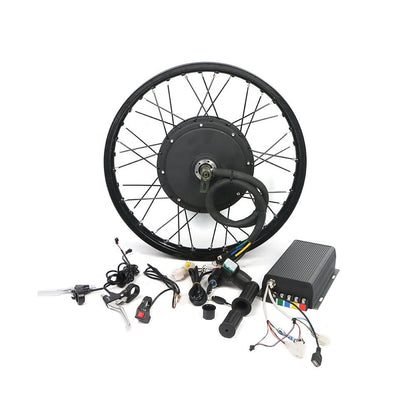
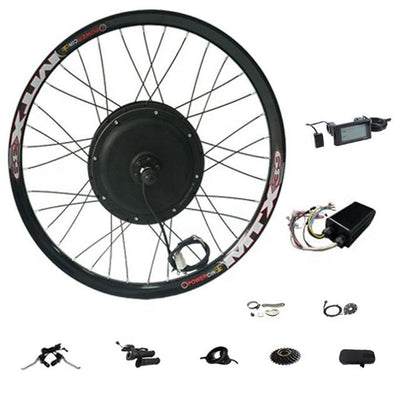
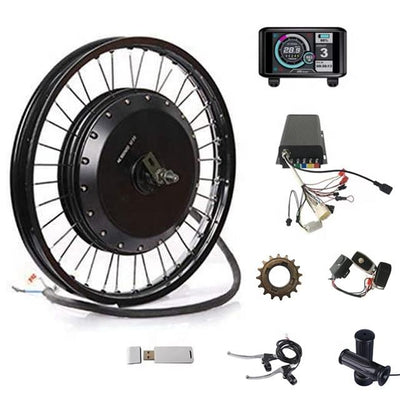
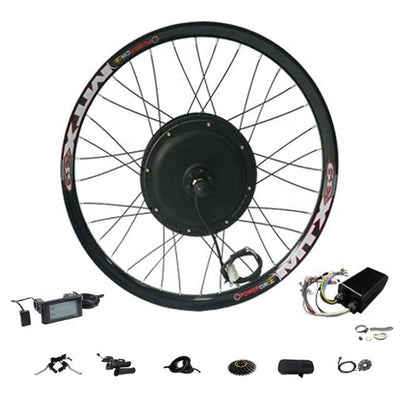

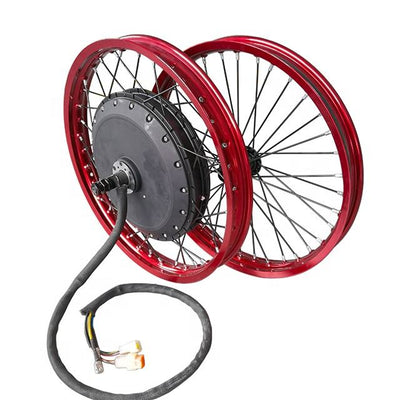

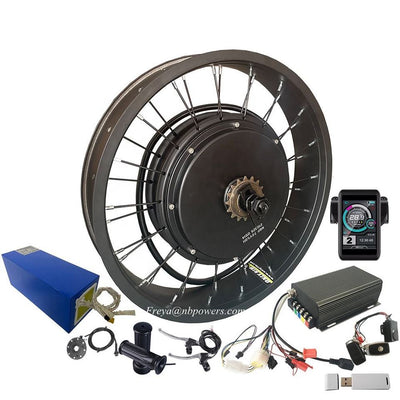

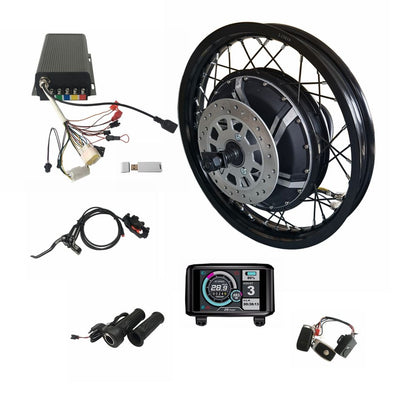
brimonidine dosage buy combigan
generic combigan buy generic brimonidine
cyclosporine medication cyclosporine for humans
buy avana online avanafil pill
buy priligy canada priligy price